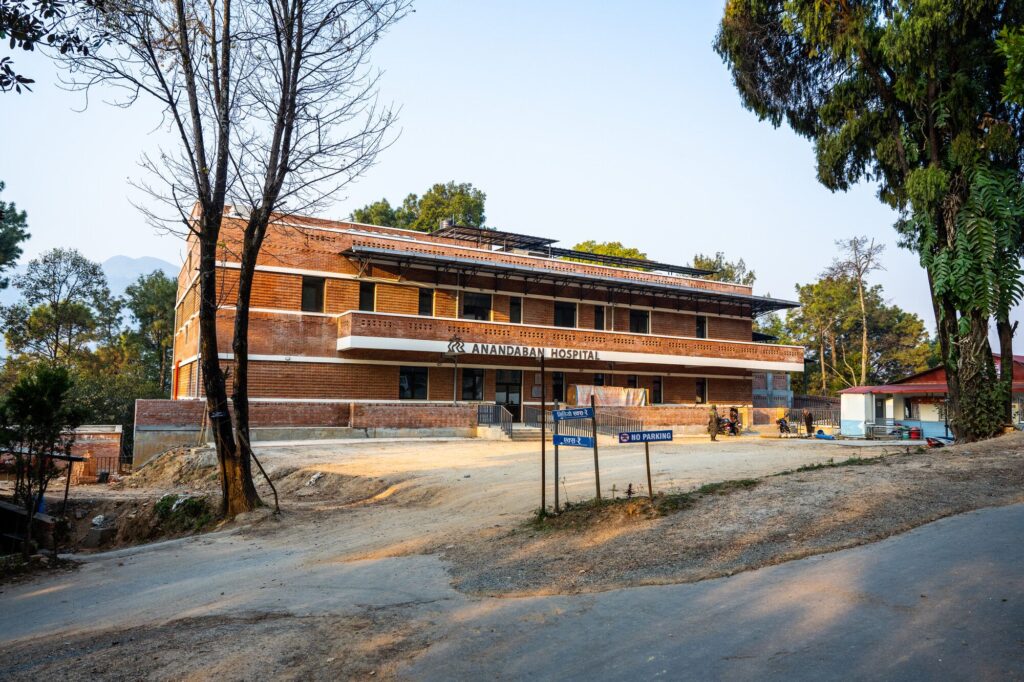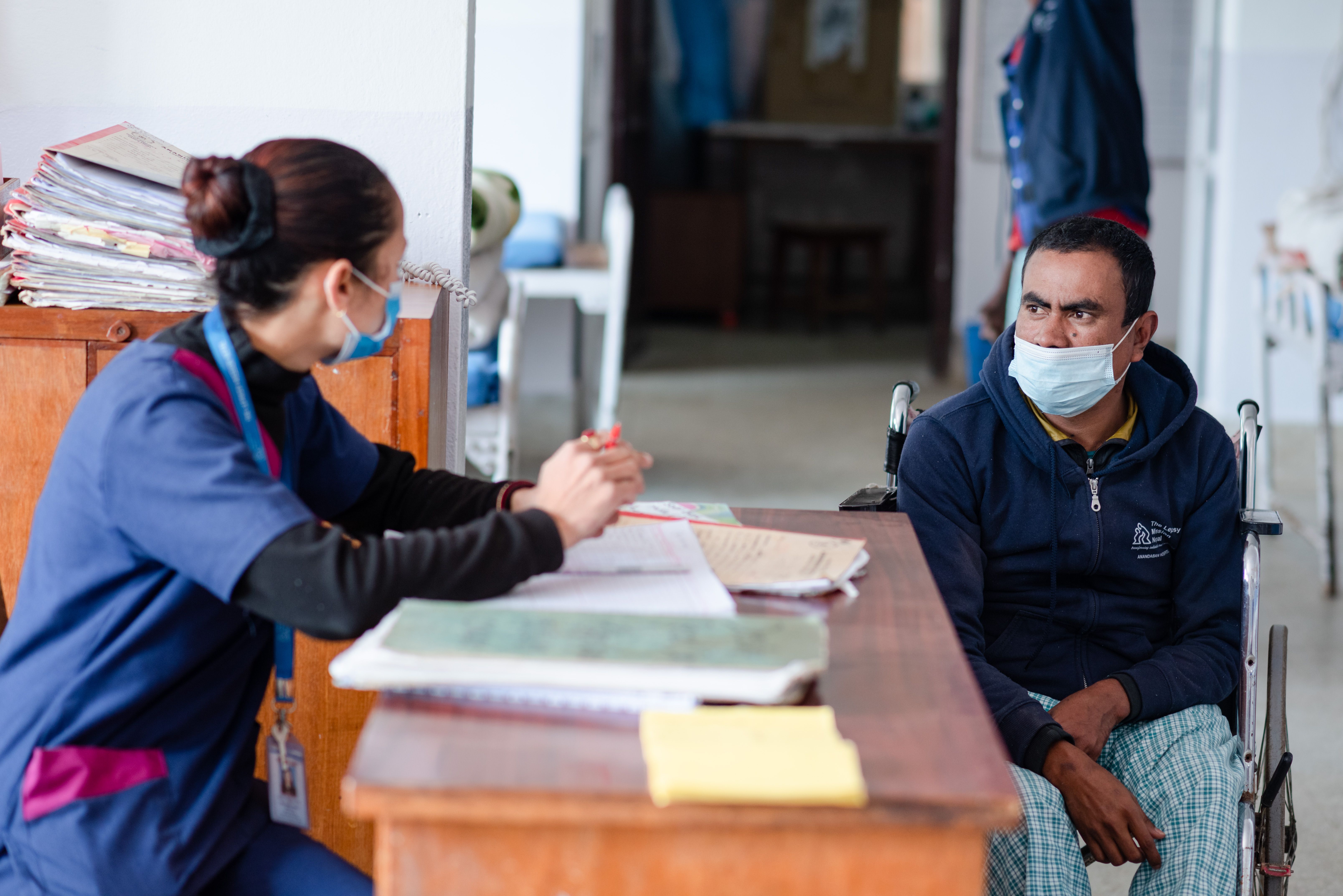Meeting vulnerability with climate resilience: building back better in Nepal

© Trevor Grant/The Leprosy Mission
Devastating heatwaves and unprecedented weather events that claim thousands of lives. A relentless drought that has plunged 18 million people into severe hunger across East Africa. Heightened vulnerability to infectious diseases. Up to 120 million people forced into poverty.
The evidence is clear: climate change is having an undeniable impact on global health.
The world is falling short of the climate targets set out in the Paris Agreement. If we continue to emit carbon dioxide at current levels, the planet could warm by 4.4°C by 2100. The devastating effects on health will only worsen.
There has never been a greater need for climate resilient health systems.
Unpacking climate resilience
The WHO defines climate resilient health systems as those that can “respond to…recover from, and adapt to climate-related shocks and stress” and continue to improve health, despite climate change. In short, climate resilience enables health systems to function during climate crises.
But health systems are contributing to the very problem they seek to address. The health sector accounts for 4.4% of global greenhouse gas emissions. As Wellcome highlights, in order for climate resilient health systems to truly be sustainable, they “must deliver care without contributing to climate change or environmental degradation”.
As an international community committed to global health, we cannot compromise on providing lifesaving and life-enhancing healthcare. We must therefore build climate resilient health systems, wherever we can.
A vital hospital in Nepal
Anandaban Hospital sits high above Kathmandu, Nepal. It serves people affected by leprosy and the wider community – for many people who come here, it’s the only healthcare they can access. These people are living in poverty, with few resources to cope with climate shocks; these are the people disproportionately impacted by climate change.

© Sabrina Dangol/The Leprosy Mission
In 2015, a 7.8 magnitude earthquake occurred in Nepal, the epicentre 85 km from the capital. It was the worst natural disaster the country had seen in decades. The shockwaves damaged thousands of buildings across the country, including at Anandaban. In particular, the desperately needed trauma and emergency centre was damaged.
The response to our Heal Nepal appeal in 2019, where donations were matched by the UK government through its Aid Match scheme, also enabled us to build a new trauma centre at Anandaban. We partnered with The Leprosy Mission Nepal; donors in England and Wales; and Article 25, a humanitarian architecture non-governmental organisation, to do just this. American Leprosy Missions and US Aid also helped to finance the centre, and a grant from the Haverstock Charitable Trust in Guernsey funded four wards.
The will house A&E and paediatric departments, as well as a maternity centre and a critical care unit. Together, these units will offer vital healthcare to the whole community surrounding Anandaban.
Building back better
So what’s this got to do with climate resilient health systems?
We had an opportunity to not just reconstruct the trauma centre as it was, but build back better. By doing this, we will both enhance the resilience of the hospital, and minimise the impact on local environmental degradation. The new trauma centre will not only be earthquake resistant; it has also been designed with sustainability in mind wherever possible.
The trauma centre is fitted with solar panels. 17% of the health sector’s 4.4% of global emissions comes using fossil fuels. Unsurprisingly, high-income countries are the largest contributors to these emissions. In contrast, Nepal has a tiny carbon footprint – 0.005% of global emissions in total across all sectors. While Anandaban is taking important steps to ensure a clean energy supply, decarbonising health systems is a global responsibility.
Just as important as the global is the local. The trauma centre has a water recycling system, provided by Guernsey’s Overseas Aid and Development Commission. A reed bed will clean waste water from the centre, which will then be reused for irrigation. Water scarcity is a recurring issue in the Kathmandu Valley, particularly during dry periods. Through this new system using natural engineering, the trauma centre will reduce its impact on an already stressed local resource.
If the global health sector continues to emit carbon as it currently does, its emissions could triple by 2050. Of course, one hospital site on its own, in a country contributing to less than 1% of global emissions, could never be a complete solution. What’s more, infrastructure is just one element of climate-resilient health systems. Climate finance, emergency preparedness, and collaboration across different health sectors all form part of the larger picture.
Anandaban demonstrates how sustainability can be embedded throughout the design and construction process for health infrastructure. As the people it serves continue to face the brunt of the climate crisis, Anandaban will be a vital place of healthcare for some of the world’s most vulnerable people for years to come.